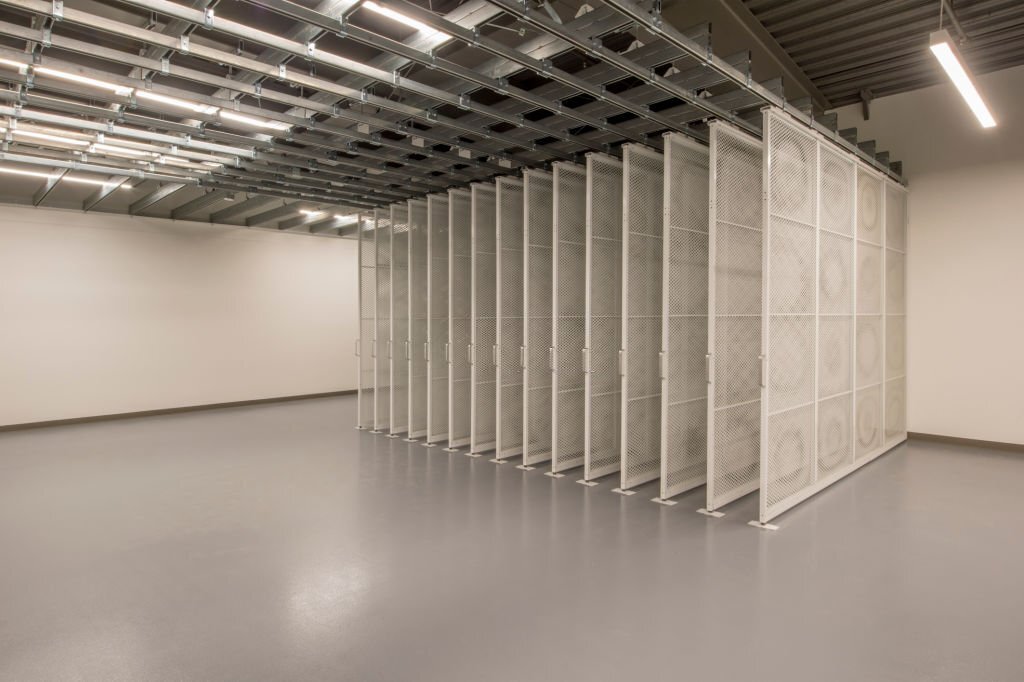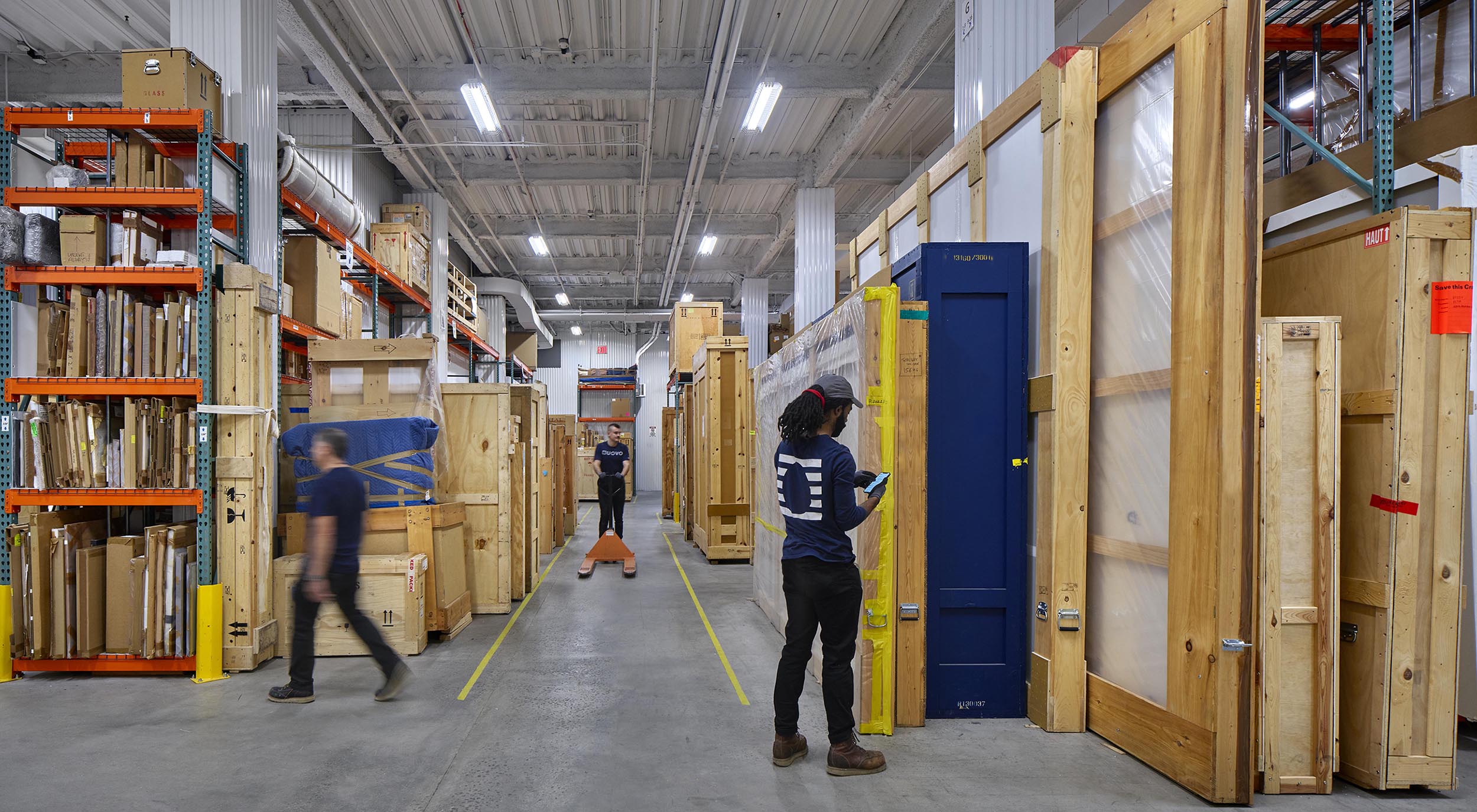As an artist or art collector, you understand the importance of preserving your artwork. Whether it’s for sentimental or financial reasons, your pieces need to be stored properly to ensure their longevity. One crucial aspect of storing artwork is maintaining proper temperature and humidity levels. This is where climate controlled storage for artwork comes in.
Additionally, climate controlled storage for artwork involves keeping the temperature and humidity at a consistent level. Typically between 65-75 degrees Fahrenheit with a relative humidity of around 50%.
Moreover, this type of storage helps to prevent damage caused by extreme temperature changes. Also, it helps with fluctuations in moisture levels.
In this article, we will explore why climate controlled storage is necessary for artwork preservation. Also, we’ll take a look at how it can benefit artists and collectors alike.
What is climate controlled storage for artwork?
Climate-controlled storage units maintain a consistent temperature and humidity level.

The building keeps these units well insulated from the outside environment. Climate-controlled storage units are becoming popular as they protect sensitive items from temperature, moisture, and dust.
So what makes climate-controlled storage different from regular storage?
Traditional storage units are often located outdoors and exposed to the elements.
Climate-controlled units, on the other hand, have advanced HVAC systems that regulate temperature and humidity levels. This makes them ideal for storing items like artwork, antiques, or anything else that requires a stable environment.
Climate-controlled storage can give peace of mind to those storing important documents or sentimental items, like photographs.
If you are looking for Art & Antiques Storage in LA, then check it out!
Why Do You Need Climate-Controlled Storage for Artwork?
Art is a valuable asset that demands proper care and preservation. One of the biggest threats to artwork is climate fluctuations, which can cause permanent damage. This is why storing your art in a climate-controlled environment is crucial for its longevity and preservation.
Climate-controlled storage maintains stable temperature and humidity levels, safeguarding artwork from environmental factors that can cause damage.

in addition, humidity control is particularly important when it comes to preserving art. Plus, high humidity levels can lead to mold growth on paintings, warping of wooden frames or canvas stretchers, and corrosion of metal parts.
On the other hand, low humidity levels can cause brittle paint layers and cracking on paper-based artworks like watercolors or prints. A controlled environment ensures that relative humidity remains at an optimal level to avoid these types of damage.
Moreover, another reason why you need climate-controlled storage for art is that it keeps pests away from your precious collection.
What Artwork Needs Climate Controlled Storage for Artwork?
Many types of artwork must climate-controlled storage. Paintings, photographs, prints, and drawings are especially vulnerable to damage from extreme temperatures and humidity levels. It is important to keep these artworks in a room or space that is temperature and humidity controlled.
Benefits of Climate-Controlled Storage for Artwork
There are a lot of benefits of using climate controlled storage. Some of them are below:
Prevents Damage
Climate-controlled storage prevents damage to artwork by maintaining stable temperature and humidity levels. Also, this reduces the risk of mold growth, warping, cracking, and artwork fading.

Pest Control
Climate-controlled storage also helps in pest control. And, pests such as rodents, termites, and insects can damage artwork, but a climate-controlled storage unit with tight seals and controlled humidity levels can prevent infestations.
Longevity
Artwork stored in a climate-controlled environment can last for years without any significant deterioration. Also, this allows art collectors and enthusiasts to preserve their collections for future generations.
Insurance
To ensure coverage, many insurance companies require that artwork be stored in climate-controlled environments. This is because climate-controlled storage significantly reduces the risk of damage to artwork.
How to Store Artwork in Climate-Controlled Storage?
Storing artwork in climate-controlled storage requires proper preparation and handling. And, the following are the steps to follow when storing artwork in a climate-controlled storage unit:
- Clean the artwork thoroughly to remove any dust, dirt, or debris.
- Wrap the artwork in acid-free paper or plastic wrap to protect it from dust and dirt.
- Place the artwork in a sturdy and protective container.
- Label the container with the artwork’s name, artist, and date.
- Place the container in the climate-controlled storage unit.
Conclusion
climate controlled storage for artwork is a necessary measure for preserving artwork. Maintaining stable temperature and humidity levels is crucial to prevent damage to artwork.
Moreover, properly preparing and handling artwork allows it to be stored in a climate-controlled environment for years without significant deterioration.
Climate-controlled storage also prevents damage, controls pests, ensures longevity, and provides insurance coverage.
FAQs
Can I store all types of artwork in climate-controlled storage?
Yes, all types of artwork require climate-controlled storage to prevent damage.
What temperature and humidity levels should be maintained in a climate-controlled storage unit?
The temperature should be between 55°F to 85°F, and the humidity levels should be between 30% to 50%.
How can I prepare artwork for storage in a climate-controlled unit?
Clean the artwork, wrap it in acid-free paper or plastic wrap, and place it in a protective



